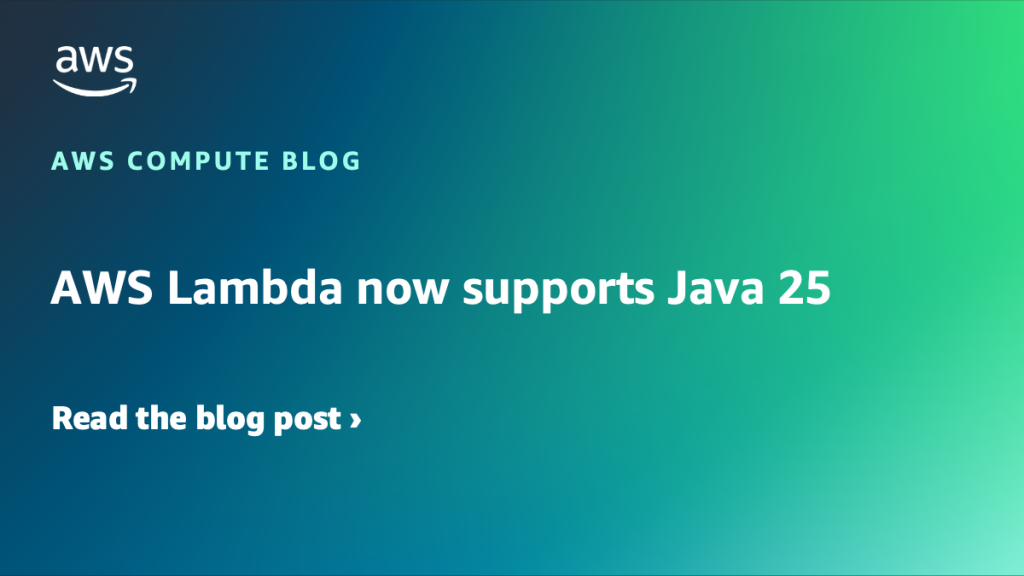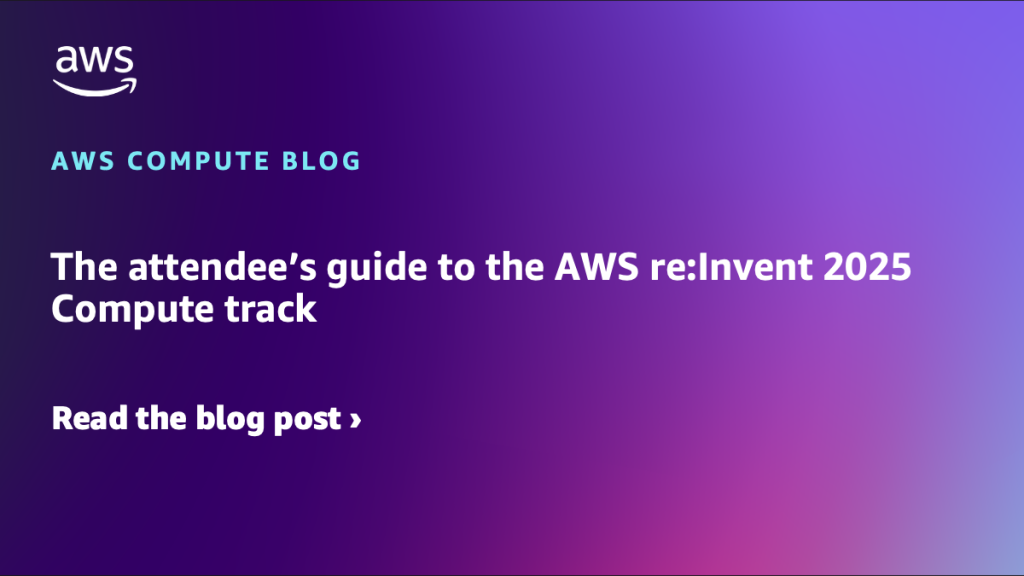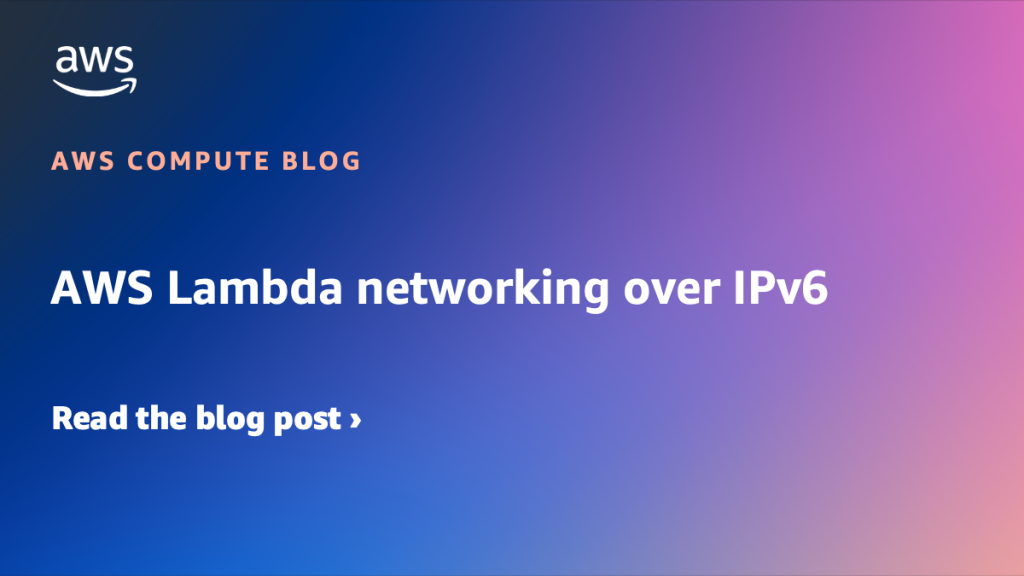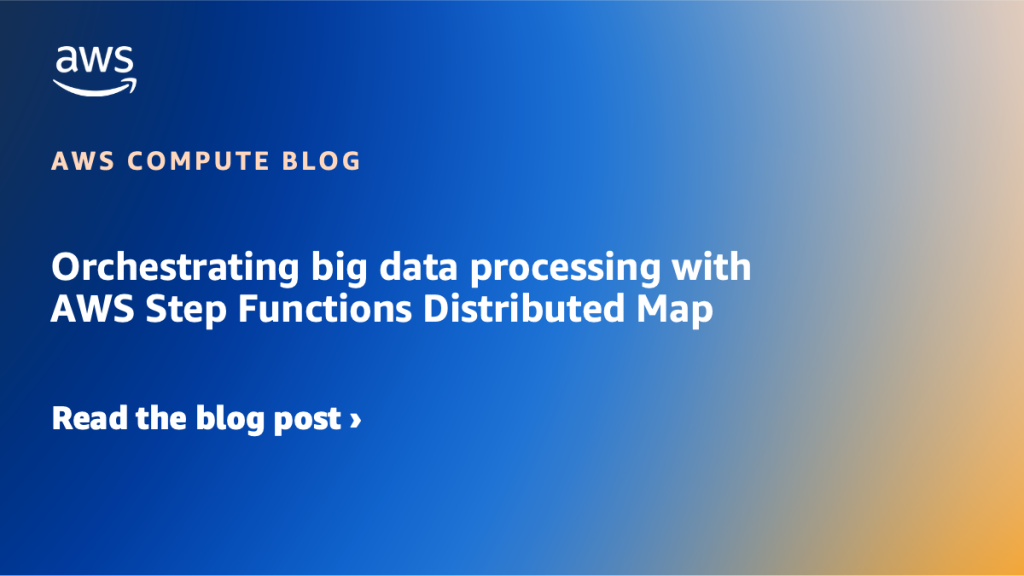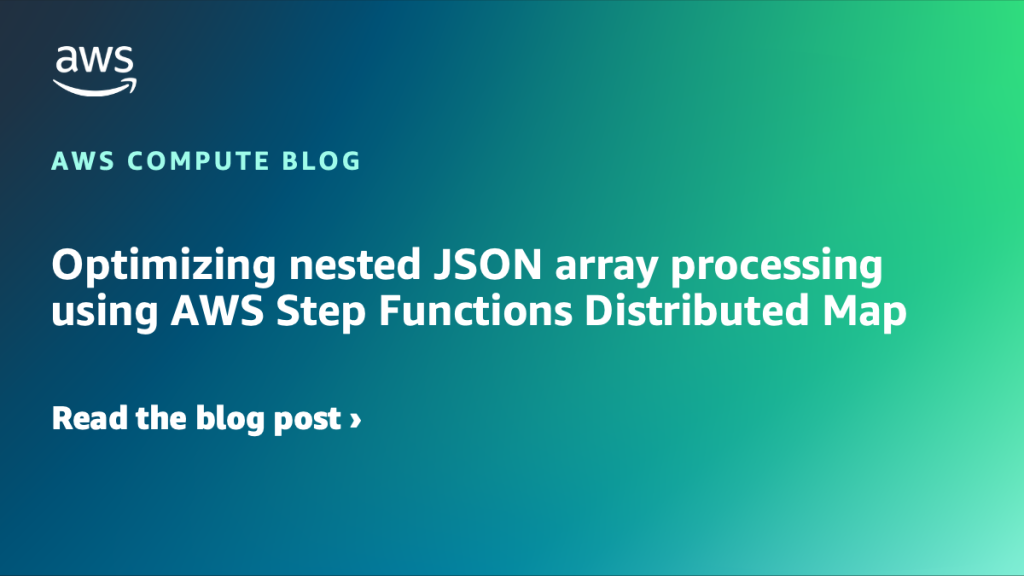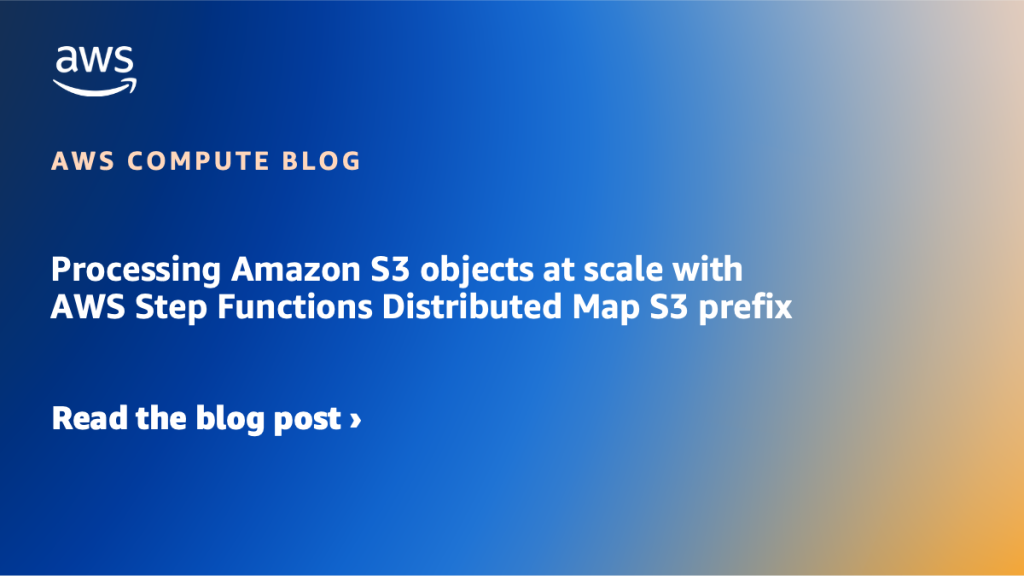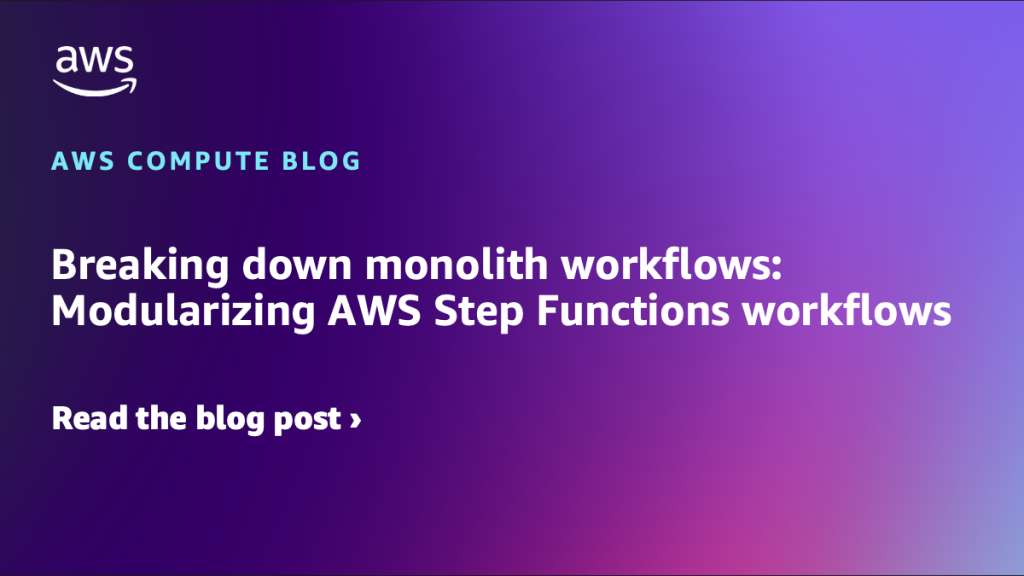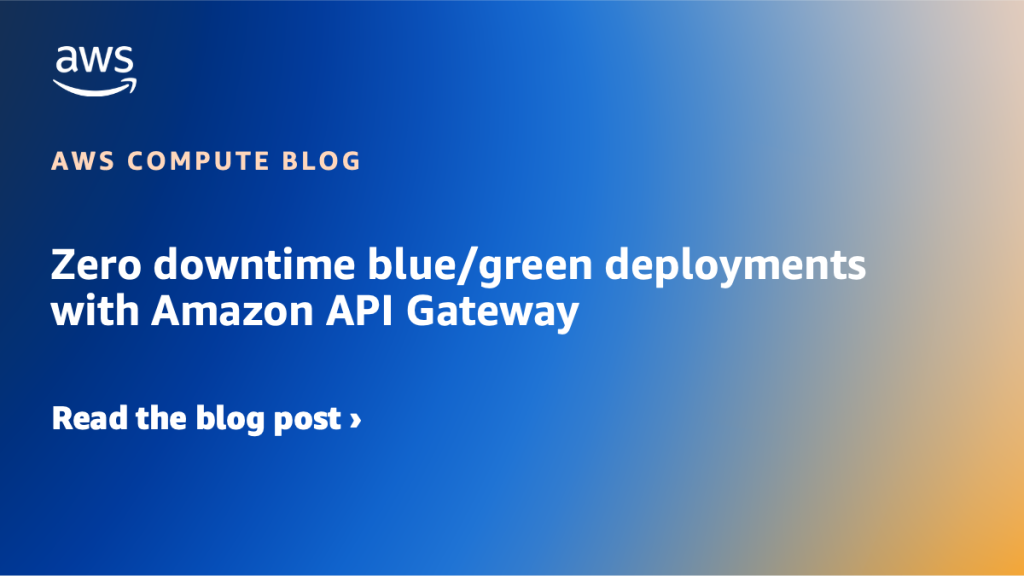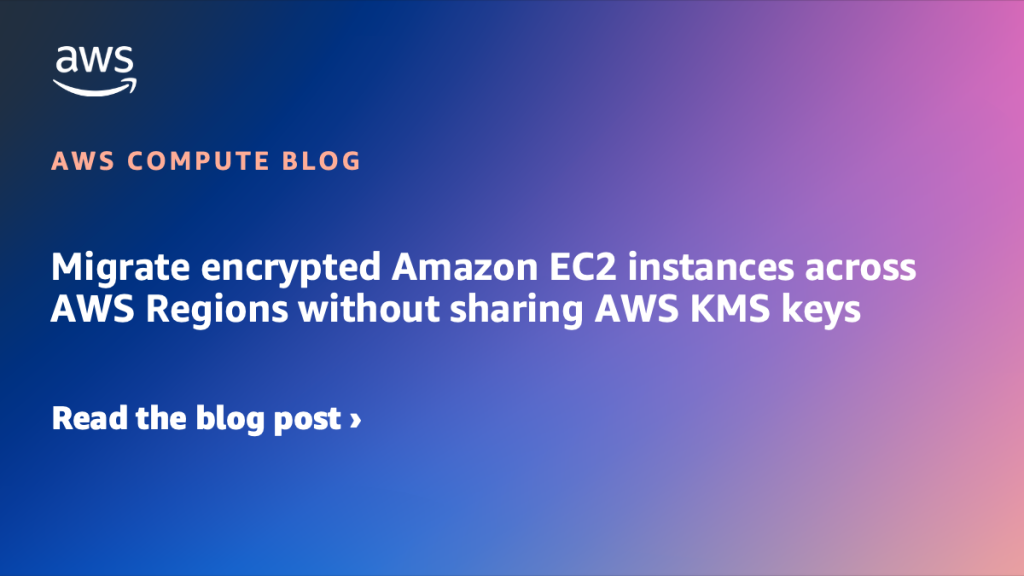AWS Compute Blog
Category: Learning Levels
AWS Lambda now supports Java 25
You can now develop AWS Lambda functions using Java 25 either as a managed runtime or using the container base image. This blog post highlights notable Java language features, Java Lambda runtime updates, and how you can use the new Java 25 runtime in your serverless applications.
The attendee’s guide to the AWS re:Invent 2025 Compute track
From December 1st to December 5th, Amazon Web Services (AWS) will hold its annual premier learning event: re:Invent. There are over 2000+ learning sessions that focus on specific topics at various skill levels, and the compute team have created 76 unique sessions for you to choose. There are many sessions you can choose from, and we are here to help you choose the sessions that best fit your needs. Even if you cannot join in person, you can catch-up with many of the sessions on-demand and even watch the keynote and innovation sessions live.
AWS Lambda networking over IPv6
This post examines the benefits of transitioning Lambda functions to IPv6, provides practical guidance for implementing dual-stack support in your Lambda environment, and considerations for maintaining compatibility with existing systems during migration.
Orchestrating big data processing with AWS Step Functions Distributed Map
In this post, you’ll learn how to use AWS Step Functions Distributed Map to process Amazon Athena data manifest and Parquet files through a step-by-step demonstration.
Optimizing nested JSON array processing using AWS Step Functions Distributed Map
In this post, we explore how to optimize processing array data embedded within complex JSON structures using AWS Step Functions Distributed Map. You’ll learn how to use ItemsPointer to reduce the complexity of your state machine definitions, create more flexible workflow designs, and streamline your data processing pipelines—all without writing additional transformation code or AWS Lambda functions.
Processing Amazon S3 objects at scale with AWS Step Functions Distributed Map S3 prefix
In this post, you’ll learn how to process Amazon S3 objects at scale with the new AWS Step Functions Distributed Map S3 prefix and transformation capabilities.
Breaking down monolith workflows: Modularizing AWS Step Functions workflows
You can use AWS Step Functions to orchestrate complex business problems. However, as workflows grow and evolve, you can find yourself grappling with monolithic state machines that become increasingly difficult to maintain and update. In this post, we show you strategies for decomposing large Step Functions workflows into modular, maintainable components.
Zero downtime blue/green deployments with Amazon API Gateway
In this post, you learn how to implement blue/green deployments by using Amazon API Gateway for your APIs. For this post, we use AWS Lambda functions on the backend. However, you can follow the same strategy for other backend implementations of the APIs. All the required infrastructure is deployed by using AWS Serverless Application Model (AWS SAM).
Migrate encrypted Amazon EC2 instances across AWS Regions without sharing AWS KMS keys
When migrating Amazon EC2 instances with encrypted Amazon EBS volumes across AWS Regions with in the same account or a different account, you face a particular challenge: AWS KMS keys are AWS Region-specific and cannot be shared across AWS Regions. This post provides a step-by-step approach to successfully migrate your encrypted EC2 instances without compromising your security posture by sharing your KMS keys.
Securing applications with AWS Nitro Enclaves: TLS termination, TAP networking, and IMDSv2
This post builds on our workshop “Build multi-party crypto wallets with AWS Nitro Enclaves” which demonstrates a Shamir Secret Sharing (SSS) application. The SSS app securely splits cryptographic private keys into multiple shards, requiring a threshold number to reconstruct the original key, ideal for Nitro Enclaves as it prevents any single party from accessing the complete key while maintaining operational functionality. AWS Nitro Enclaves provide isolated environments that keep critical operations such as decryption and cryptographic key management secure from both from root user and external threats.
